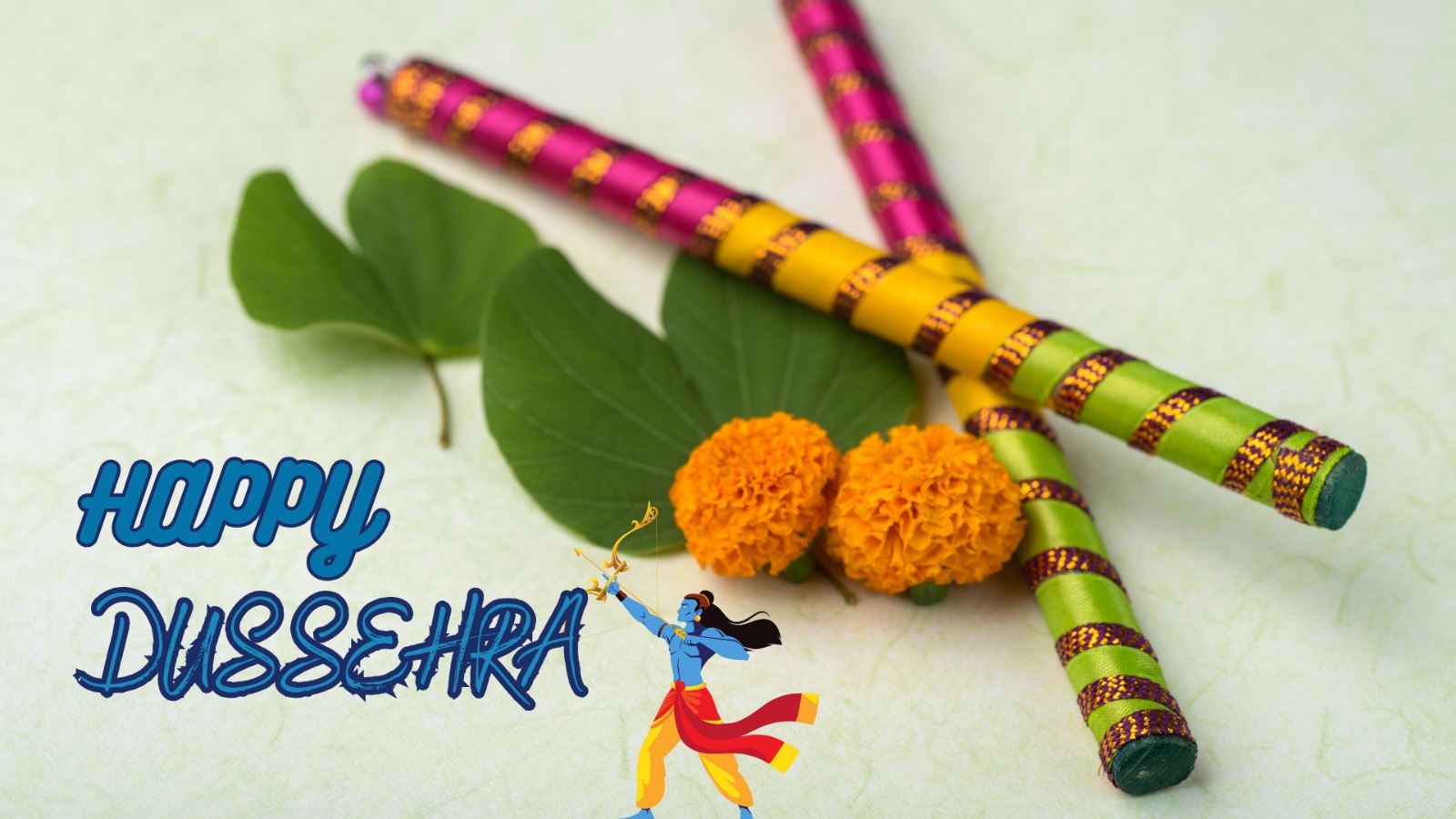Blog
The Celestial Significance of Dussehra: Astrology and the Triumph of Good over Evil
Author: Astrologer
Category: Dussehra
Posted on: Oct 02, 2023

Introduction
Dussehra, also known as Vijayadashami, is one of the most celebrated Hindu festivals in India. It marks the triumph of good over evil and the victory of Lord Rama over the demon king Ravana, as recounted in the epic Ramayana. While Dussehra is primarily a religious and cultural festival, it also holds a fascinating connection to astrology. In this blog post, we will explore the celestial significance of Dussehra, delving into the astrological aspects that make this festival a unique and spiritually charged event.
Also read - Exploring Ancient Wisdom of Vedic Astrology and Palmistry
The Timing of Dussehra
Dussehra falls on the tenth day of the Hindu lunar calendar month of Ashwin, typically in September or October. The exact date varies from year to year based on the positioning of celestial bodies, particularly the moon. Astrologically, this timing is significant because it aligns with the energy shifts in the cosmos, which play a crucial role in the festival's symbolism and rituals.
The Role of Planetary Positions
The Influence of the Moon: The moon's position is of utmost importance in astrology, and it plays a central role in Dussehra celebrations. The festival is observed on the tenth day of the lunar month, and on this day, the moon is believed to be at its peak, radiating powerful energies. This is symbolic of the triumph of light (represented by the moon) over darkness (symbolized by the demon king Ravana).
The Sun's Role: Dussehra also coincides with the transition of the sun into the zodiac sign of Libra (Tula). Libra is associated with balance, justice, and harmony. This alignment signifies the restoration of balance and righteousness, as Lord Rama vanquished Ravana, who symbolized evil and injustice.
Astrological Houses: In Vedic astrology, each house in the birth chart represents different aspects of life. The tenth house is associated with fame, honor, and achievements. Dussehra's celebration on the tenth day symbolizes the victory of dharma (righteousness) over adharma (unrighteousness), leading to honor and fame for Lord Rama.
The Role of Nakshatras
In Vedic astrology, Nakshatras are lunar constellations that have a significant impact on an individual's life. The Nakshatra associated with the lunar day of Dussehra is "Punarvasu." Punarvasu is associated with renewal and second chances. This Nakshatra's energy aligns with the festival's theme of victory over adversity, allowing individuals to begin anew and overcome challenges in their lives.
The Symbolism of the Effigies
One of the most iconic rituals of Dussehra is the burning of effigies of Ravana, his brothers Kumbhakarna and Meghanada, and other evil characters from the Ramayana. These effigies represent the triumph of good (Rama and his allies) over evil (Ravana and his demons), symbolizing the victory of light over darkness.
Astrologically, this ritual can be seen as a symbolic purification of negative energies. The act of burning these effigies on Dussehra signifies the removal of malefic influences and the renewal of positive energies in one's life. It is believed that witnessing the destruction of the effigies brings blessings and protection from negative forces.
Chat here: Chat with astrologer online
The Navaratri Connection
Dussehra is the culmination of the nine-night festival known as Navaratri, which honors the divine feminine energy in its various forms, including Goddess Durga, Lakshmi, and Saraswati. Each night of Navaratri is associated with a different form of the goddess and has unique astrological significance:
Pratipada: The first night is associated with Goddess Shailaputri, who represents new beginnings. It is believed that this night is favorable for setting new intentions and starting new ventures.
Dvitiya: The second night honors Goddess Brahmacharini, symbolizing asceticism and self-discipline. It is a night to focus on self-control and spiritual growth.
Tritiya: The third night is dedicated to Goddess Chandraghanta, who represents bravery and courage. It is a time to overcome fears and obstacles.
Chaturthi: The fourth night celebrates Goddess Kushmanda, who is believed to bless devotees with creativity and intelligence. It is an auspicious night for seeking knowledge and wisdom.
Panchami: The fifth night honors Goddess Skandamata, who represents motherly love and protection. It is a time to seek emotional healing and maternal blessings.
Shashti: The sixth night is dedicated to Goddess Katyayani, symbolizing righteous anger and divine justice. It is a night to stand up against injustice.
Saptami: The seventh night celebrates Goddess Kalratri, who embodies fierce energy and the destruction of negativity. It is a night to rid oneself of negative influences.
Ashtami: The eighth night is dedicated to Goddess Mahagauri, symbolizing purity and serenity. It is a night for inner cleansing and peace.
Navami: The ninth night honors Goddess Siddhidatri, who bestows blessings and spiritual accomplishments. It is a night to seek divine grace and fulfillment.
The combination of these nine nights of devotion and the astrological energies associated with each goddess culminates in the powerful energy of Dussehra. It is believed that the blessings and energy gathered during Navaratri reach their peak on the tenth day, making Dussehra an extremely auspicious time for spiritual practices and seeking divine intervention.
Astrological Remedies and Rituals
During Dussehra, many people seek astrological remedies and perform rituals to enhance their well-being and seek the blessings of the divine. Some common astrological practices during this festival include:
Worship of the Goddess: Devotees perform special pujas and prayers to honor Goddess Durga and seek her protection and blessings. The goddess is believed to embody the combined energy of all the forms worshipped during Navaratri.
Surya Puja: Since Dussehra coincides with the sun's transition into Libra, performing a Surya Puja (sun worship) is considered auspicious. It is believed to bring clarity of thought and harmony into one's life.
Recitation of Mantras: Chanting mantras associated with Lord Rama or Goddess Durga is a common practice during Dussehra. These mantras are believed to invoke divine energy and protection.
Charity and Acts of Kindness: It is believed that performing acts of charity and kindness during Dussehra can mitigate negative astrological influences and bring positivity into one's life.
Burning of Effigies: As mentioned earlier, the burning of effigies symbolizes the destruction of negativity and the triumph of good over evil. It is a powerful ritual for releasing negative energies.
Navagraha Puja: Worship of the nine planetary deities, known as the Navagrahas, is also common during Dussehra. This puja is believed to mitigate the adverse effects of malefic planetary positions.
Conclusion
Dussehra, with its astrological significance and rich symbolism, is a festival that beautifully blends spirituality and culture. It reminds us of the eternal battle between good and evil and the ultimate triumph of righteousness. The alignment of celestial energies during this time enhances the festival's potency, making it an auspicious period for seeking divine blessings and making positive changes in one's life.
As we celebrate Dussehra, let us not only revel in the festivities but also reflect on the deeper astrological and spiritual meanings it holds. May the victory of good over evil in our lives be as resounding as the triumph of Lord Rama over Ravana, and may the celestial energies of this auspicious day guide us towards a path of righteousness, balance, and harmony.
Have any questions? Speak with an astrologer: Download the App Now






 SIGN IN WITH GOOGLE
SIGN IN WITH GOOGLE